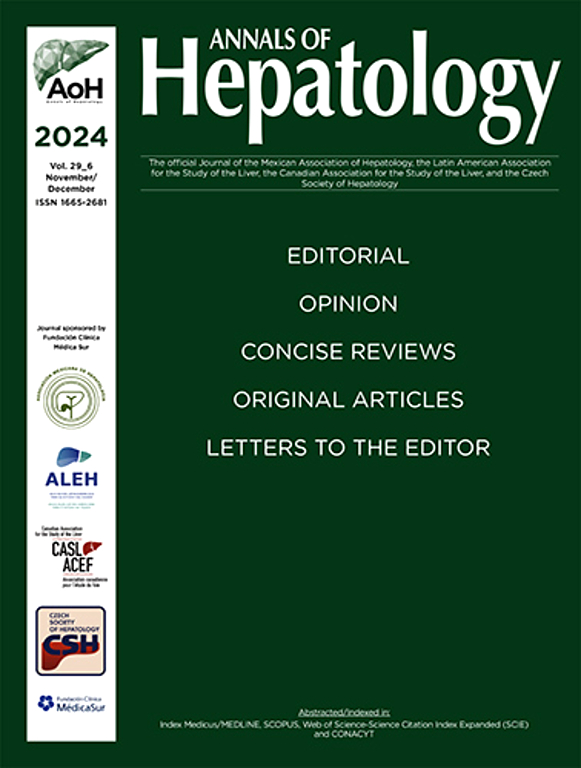Liver stiffness measurement trajectory analysis for prognosis in patients with chronic hepatitis B and compensated advanced chronic liver disease
IF 3.7
3区 医学
Q2 GASTROENTEROLOGY & HEPATOLOGY
引用次数: 0
Abstract
Introduction and Objectives
Liver stiffness measurements (LSMs) offer a noninvasive method for monitoring liver disease development. This study evaluated the prognostic value of different LSM trajectories in chronic hepatitis B (CHB) and compensated advanced chronic liver disease (cACLD) patients.
Materials and Methods
We retrospectively analyzed 1272 CHB and cACLD patients with at least two LSMs, applied group-based trajectory modeling (GBTM) to identify distinct LSM trajectories, and used a Cox model to analyze their associations with liver-related events (LREs) and mortality risk.
Results
Patients were categorized into five groups with distinct LSM trajectories: 67 (8.5 %), 13 (11 %), 36 (23.5 %), 34 (27.6 %) and 23 (25.0 %) developed LREs in Groups 1–5. The low stable trajectory (Group 3), the medium gradual decrease trajectory (Group 4) and high quickly decrease followed by increase trajectory (Group 5) had higher LREs risks than the low gradual decrease trajectory (Group 1) (adjusted HRs 2.26, 2.39, 2.67; 95 % CIs 1.50–3.40, 1.57–3.66, 1.61–4.43, respectively). Similar elevated risks were observed for hepatic decompensation, hepatocellular carcinoma (HCC), liver-related and all-cause mortality, except that there was no significant difference in the risk of HCC between Groups 4 and 1 (aHR 0.66, 0.36–1.23). When comparing Group 1 with the medium quickly decrease trajectory (Group 2), no significant differences were noted in the prognosis (P > 0.05). Notably, age over 40, high LSM, low PLT, and high total bilirubin were linked to high-risk trajectories (Groups 3–5).
Conclusions
Monitoring LSM trajectories improves prognostic prediction in CHB and cACLD compared with single measurements and may guide personalized treatment strategies.
求助全文
约1分钟内获得全文
求助全文
来源期刊

Annals of hepatology
医学-胃肠肝病学
CiteScore
7.90
自引率
2.60%
发文量
183
审稿时长
4-8 weeks
期刊介绍:
Annals of Hepatology publishes original research on the biology and diseases of the liver in both humans and experimental models. Contributions may be submitted as regular articles. The journal also publishes concise reviews of both basic and clinical topics.
 求助内容:
求助内容: 应助结果提醒方式:
应助结果提醒方式:


